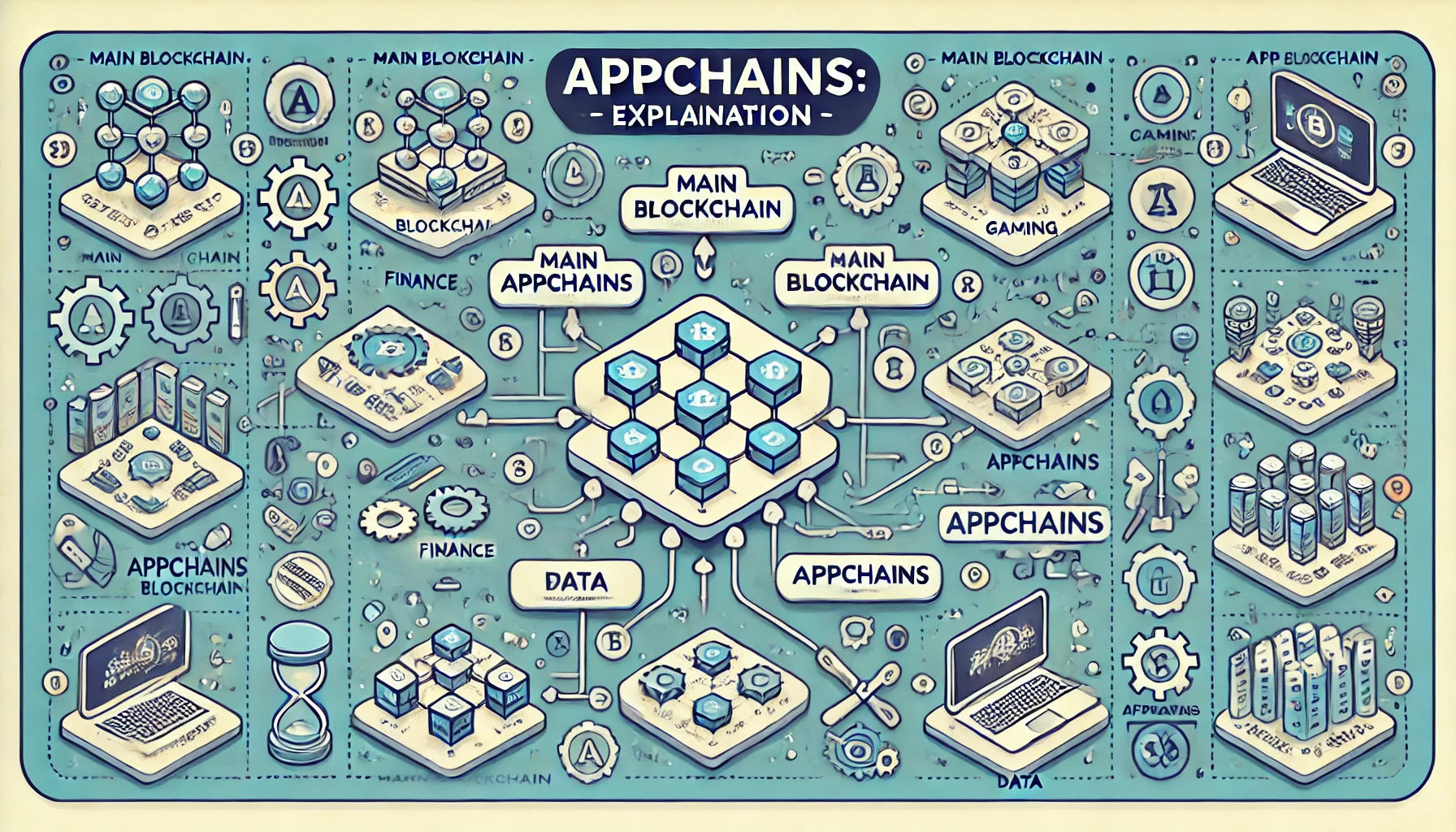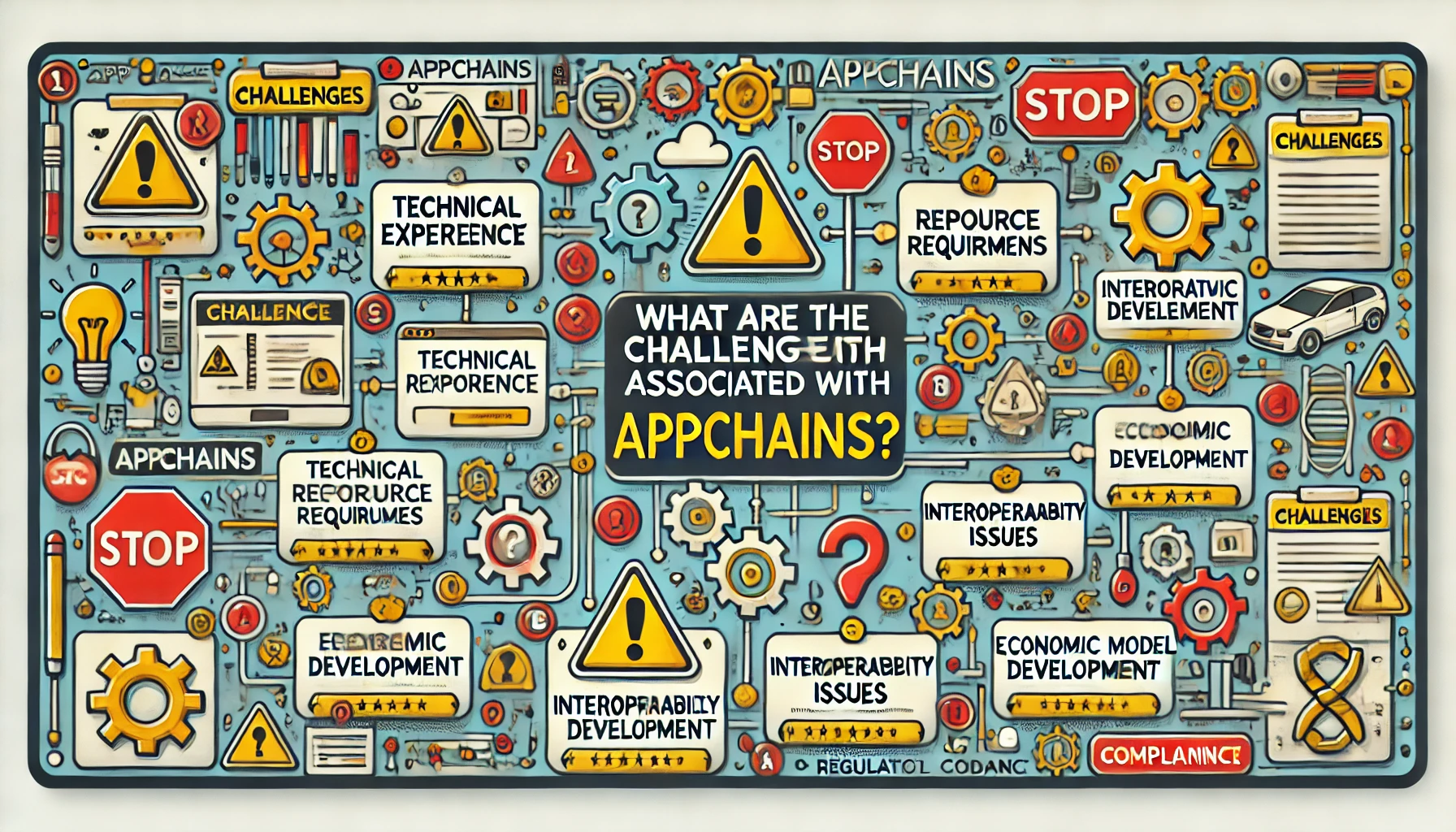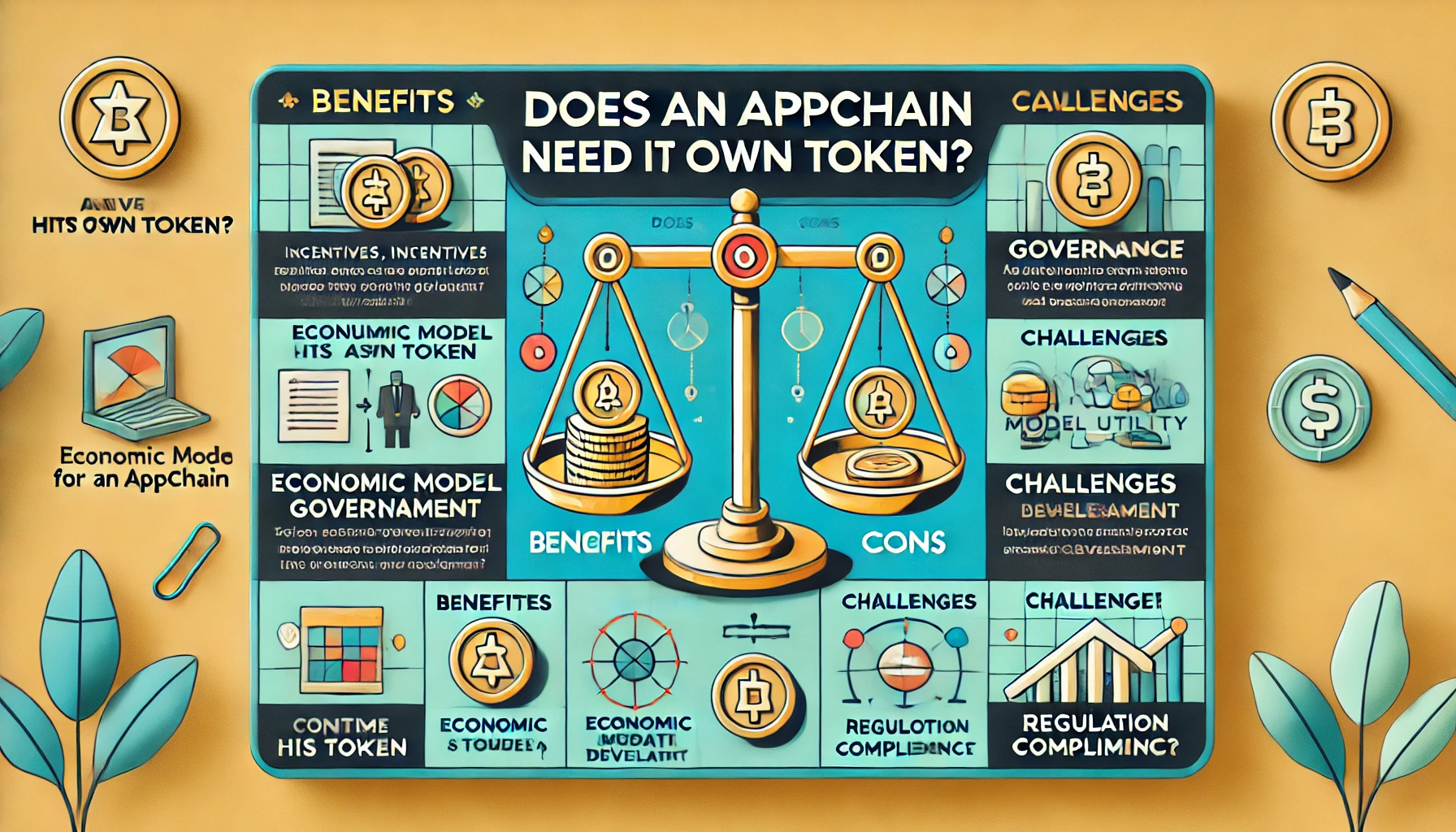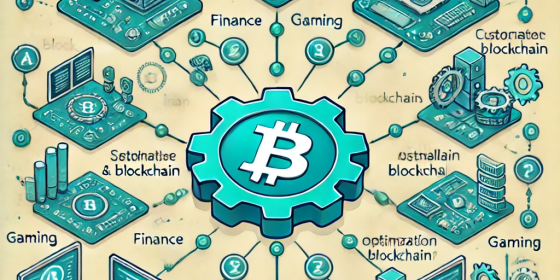Appchain can be a long-term solution for ensuring high throughput and low transaction costs. The first blockchain network, Bitcoin, was created for P2P payments. As the number of users and usage grew, its base layer faced difficulties in providing high throughput and low transaction costs. Developments such as the Lightning Network are working to address these limitations and improve scalability.
Ethereum, the second-largest blockchain network, has also faced scaling issues since 2021, when the use of its DeFi applications surged, leading to increased transaction times and costs. Despite the successes of monolithic chains like Solana, appchains offer a more specialized solution to these problems.
- Appchains: Explanation
- Why Are Appchains Important?
- What Are the Challenges Associated with Appchains?
- What Is the Difference Between Sidechains and Appchains?
- Examples of Appchains
- Does an Appchain Need Its Own Token?
- Bridging Infrastructure for Appchains
- Impact of Restaking on Appchains

Appchains: Explanation
An appchain is a blockchain designed to support a single application or a specific set of applications. Unlike general-purpose blockchains like Ethereum or Solana, which host many applications and smart contracts, appchains are tailored to the needs of a particular application.
An appchain (layer-2 or layer-3 network) can be a fork of the base network (layer-1), using the existing codebase with customizations and optimizations. This approach allows developers to build on a proven foundation, reducing development time and effort. Forking also ensures some compatibility with the base chain, potentially simplifying integration and interoperability.
This customization allows for optimized performance, bespoke user functionality, and tailored blockchain economics to meet the specific needs of the application.
Why Are Appchains Important?
Appchains provide the flexibility to customize blockchain architecture, consensus mechanisms, and governance to the specific needs of the application. This customization can enhance performance and user experience.
By dedicating blockchain resources to a single application, appchains can achieve higher throughput and lower latency compared to general-purpose blockchains. Appchains can implement security measures specifically designed for the application, reducing the risk of vulnerabilities that might affect general-purpose blockchains.
Appchains also allow teams to develop bespoke transaction prioritization strategies, which can be more challenging on the base network where multiple applications compete for transaction priority. Thus, an appchain can improve the transaction processing experience for its users.
Developers have greater control over blockchain features, updates, and governance, allowing for faster innovation and adaptation to changing requirements.

What Are the Challenges Associated with Appchains?
Building and maintaining an appchain requires significant technical expertise and resources, which can be a barrier for smaller projects. Apart from focusing on growing the user base for the application, appchains also need to ensure their infrastructure is maintained. Therefore, the cost and skills required are significant obstacles.
Appchains may face difficulties in interacting with other blockchains, requiring robust bridging solutions to ensure seamless communication and asset transfer. Bridges are known for their centralization risk, which hackers have exploited over the years. The Wormhole bridge hack and the Ronin bridge hack are examples of such attacks.
Developing a robust economic model to incentivize validators and users can be challenging, especially for applications with smaller user bases. Validators will become key economic actors in an appchain, and applications need to create tokenomics to meet their needs and ensure the scalability and viability of the network, not just at the application level but also at the infrastructure level.
General-purpose blockchains benefit from network effects, where the value of the network increases with the number of users and applications. Appchains may struggle to achieve similar levels of adoption and community engagement. While this may be a challenge in the short and medium term, as the security and user experience of bridges between appchains and base blockchains improve, this issue may become less relevant.
What is the difference between sidechains and appchains?
Both sidechains and appchains are separate blockchains that interact with the main network (often called the parent chain). However, their purpose and design differ significantly. Sidechains cater to various applications, while appchains focus on niche functionalities. Both technologies leverage the security and decentralization of the main blockchain network, but appchains allow for a more tailored user experience.
Sidechain Appchain Purpose Scalability, general-purpose use Specialized, application-specific use Focus Wide range of applications Narrow, customized functionality Flexibility Some customization High degree of customization
Examples of appchains
Some appchains have managed to scale despite the challenges discussed above.
Arbitrum
Arbitrum is a layer-2 network on Ethereum. Over the past few years, Arbitrum has built a strong DeFi community. As of June 2024, the network’s total value locked (TVL) exceeds $3 billion, with a daily trading volume of over $200 million. The network supports Ethereum DeFi applications like Aave and Uniswap while also successfully building native DeFi applications like Pendle and GMX.
Immutable
Immutable is a layer-2 network on Ethereum focused on the gaming ecosystem. It found its niche after the expansion of DeFi on Ethereum in 2021. Gaming applications require micropayments and a higher number of transactions than the base Ethereum network can support.
Therefore, Immutable deliberately focused on the gaming ecosystem. Although the TVL of the chain is quite low due to its focus on gaming, it has become the go-to chain for gaming applications, with over 200 gaming projects on the network.
Pythnet and ZetaChain
While Arbitrum and Immutable are rollup chains that address Ethereum’s scalability issues, they do not necessarily serve just one application. They host numerous decentralized applications (DApps) within their category. However, pure appchains, which address one app instead of an app category, are starting to take shape, with examples like Pythnet and ZetaChain, which are forks of Solana.
Pyth Network provides data that facilitates on-chain transactions, and ZetaChain is one of the most used derivatives trading platforms on Solana. The total value of transactions supported by Pyth data reached $4.4 billion since the beginning of 2024. In April 2024 alone, Pyth data facilitated over $110 billion in trading volume.
ZetaChain is a young platform with a cumulative trading volume of over $9 billion and a daily derivatives trading volume of about $80 million as of June 2024, according to data from DefiLlama.
While these examples are success stories, there are also those who have struggled to maintain both the application and the network infrastructure. For instance, Helium, a decentralized physical internet application (DePIN), started with its own chain but couldn’t focus on its infrastructure and had to migrate to Solana.

Does an appchain need its own token?
An appchain does not necessarily need to launch its own token, but doing so can provide several benefits:
- Incentives: A native token can be used to incentivize validators and users, ensuring the security and functionality of the appchain.
- Governance: Tokens can facilitate decentralized governance, allowing participants to take part in decision-making processes.
- Economic utility: Tokens can be used to pay transaction fees, access services, or participate in the application's ecosystem, creating economic utility and driving demand.
However, launching a token also introduces challenges, such as establishing a sustainable economic model and managing regulatory compliance.
Bridging infrastructure for appchains
Bridging infrastructure connects appchains with other blockchains, enabling the transfer of assets and data. Various bridging solutions exist:
- Centralized exchanges (CEXs): CEXs act as intermediaries, allowing users to transfer assets between different blockchains. While convenient, they introduce centralization risks and potential points of failure.
- Decentralized bridges: Decentralized bridges use smart contracts and decentralized networks to facilitate cross-chain transfers without relying on a central authority. Examples include Polkadot’s parachains and the Inter-Blockchain Communication (IBC) protocol of Cosmos.
- Atomic swaps: Atomic swaps enable direct peer-to-peer exchanges of assets between different blockchains without the need for intermediaries.
Impact of restaking on appchains
Restaking refers to the process of staking assets on multiple blockchains or applications to maximize the utility of staked cryptocurrency in various financial operations without needing additional investment. In the context of proof-of-stake (PoS) blockchains, restaking can have several impacts on appchains.
By allowing validators to restake assets on multiple blockchains, the security of appchains can be enhanced as more assets are at stake in maintaining the network’s integrity. Restaking can provide additional economic incentives for validators, encouraging more participation and strengthening the appchain’s validator network.
Restaking can be a mechanism through which appchains can leverage the security, token, and even validator infrastructure of the base network. This effectively reduces their overhead costs of launching a new token; however, restaking still requires managing proper incentives for the economic actors on the network.
As efforts to build the most scalable mainstream crypto application intensify, the voice of appchains across various ecosystems will only get louder. Some successful examples with appchains or their variations can inspire future developers.






